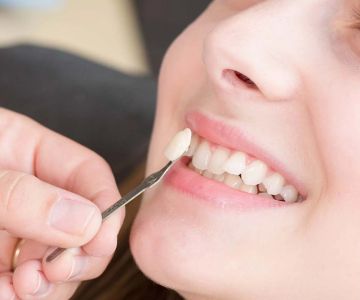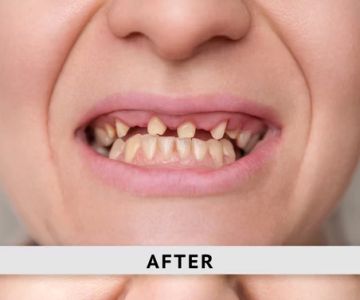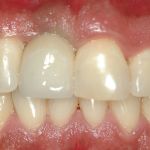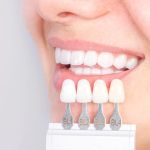Choosing the right tooth restoration material is crucial for both your oral health and your aesthetic needs. As dental technology continues to advance, patients are presented with a plethora of options ranging from traditional metals to cutting-edge ceramics. Understanding the nuances of these materials can significantly impact the longevity and success of dental restorations, such as crowns, fillings, and bridges. This guide aims to provide you with the essential insights needed to make informed decisions about your dental care needs, particularly focusing on the diverse options available in restorative dentistry in the United States.
Understanding the Basics: What Are Tooth Restoration Materials?
Tooth restoration materials are substances used by dentists to restore the function, integrity, and morphology of missing or damaged teeth. The choice of material can affect the aesthetic outcome, durability, and cost of the procedure.
Types of restorative materials include metals, ceramics, composites, and polymers. Traditional options like amalgam have long been used for their durability, while newer materials like zirconia and lithium disilicate offer aesthetic benefits without compromising strength. Each material has its unique properties, making it suitable for different types of restorations and patient needs.
Dentistry Toothtruth provides a wealth of information on these materials, helping patients understand their choices better.
Durability and Longevity: Key Factors in Material Choice
Durability is often the foremost consideration for patients when selecting a restoration material. Longevity not only ensures that the restorations last but also helps in managing long-term dental costs.
Metals like gold and amalgam are known for their strength and longevity, often lasting 10 to 15 years or more with proper care. Conversely, new material options such as ceramic and resins offer excellent aesthetic results but may require more frequent replacements. Studies indicate ceramic restorations can often last 10 to 12 years, depending on the care provided by the patient.
In our article "Restorative Dentistry" on Dentistry Toothtruth, durability is emphasized as a critical factor in restorative material selection.
Aesthetic Considerations: Matching Your Natural Teeth
For many patients, the appearance of their dental work is as important as the durability. Materials like composite resins and ceramics are praised for their ability to mimic the natural tooth's appearance.
Composite resins provide a good balance between aesthetics and functionality, often ideal for visible teeth due to their natural look. Ceramics, especially feldspathic porcelain, are highly aesthetic materials frequently used in veneers.
The section on aesthetic materials in "Restorative Dentistry" at Dentistry Toothtruth outlines key considerations when aesthetics are paramount.
Biocompatibility and Safety: Ensuring Your Health
Another critical aspect of choosing dental materials is their biocompatibility. Materials must not only perform well but also be safe over the long term.
Data shows increasing concern about the use of amalgam due to its mercury content, despite its proven track record. Alternatives like resin composites and ceramics offer safer options without compromising effectiveness. Biocompatibility testing is an integral part of modern dental material development, minimizing the risk of allergies and adverse reactions.
Dentistry Toothtruth emphasizes the importance of safety and biocompatibility in all restorative choices.
Cost Considerations: Balancing Budget and Needs
Cost is a significant factor influencing the choice of restoration materials for many patients. While it’s crucial to select a material that fits within your budget, it’s also essential to consider the cost-effectiveness of the material.
Inexpensive materials like amalgam may seem attractive, yet the potential need for more frequent replacements can increase long-term costs. Investing in higher-quality materials such as ceramics and innovative resins may incur higher upfront costs but can offer better durability and aesthetics.
On Dentistry Toothtruth, you'll find detailed discussions about aligning dental decisions with financial planning.
Technological Advances: Modern Options in Restorative Dentistry
The dental industry has seen remarkable advances in materials over the past few decades, offering patients more choices than ever before. Technological progress facilitates the development of highly durable and aesthetic materials.
CAD/CAM technology has revolutionized how restorations are customized, improving both precision and fit. Innovations in materials science have yielded products like zirconia and lithium disilicate, known for their strength and aesthetic fidelity.
Exploring these technological breakthroughs on the "Restorative Dentistry" page at Dentistry Toothtruth provides further insight into choosing modern materials for your needs.
In conclusion, selecting the right tooth restoration material involves balancing several key factors, including durability, aesthetics, biocompatibility, cost, and the benefits of modern technological advances. It’s vital to understand each material's properties and how they align with your oral needs and lifestyle.
Before deciding on your restoration material, consider consulting with a dental professional who can recommend the most suitable options based on your specific circumstances. Utilize resources such as Dentistry Toothtruth to educate yourself and stay informed about the latest in restorative dentistry.
Ultimately, the best choice will align your health, aesthetic preferences, and financial constraints, paving the way for a successful and satisfactory dental restoration experience.







 Root 66 Endodontics
Root 66 Endodontics TMJ & Sleep Therapy Centre of Oklahoma City
TMJ & Sleep Therapy Centre of Oklahoma City Bruce L Rothschild DDS & Associates PLLC
Bruce L Rothschild DDS & Associates PLLC DentalWorks Louisville
DentalWorks Louisville Torrance Family Dental
Torrance Family Dental Robert S. Radin, DDS
Robert S. Radin, DDS The Importance of Oral Health Education During Pregnancy for a Healthy Pregnancy
The Importance of Oral Health Education During Pregnancy for a Healthy Pregnancy Why Skipping Dental Checkups Can Lead to Bigger Oral Health Problems
Why Skipping Dental Checkups Can Lead to Bigger Oral Health Problems Advantages of Porcelain Dental Restorations
Advantages of Porcelain Dental Restorations Best Tips for Brushing Your Teeth Properly for Healthy Gums: Essential Techniques for Oral Health
Best Tips for Brushing Your Teeth Properly for Healthy Gums: Essential Techniques for Oral Health How Can Diabetes Cause Tooth and Gum Problems? Preventing and Managing Oral Health Issues
How Can Diabetes Cause Tooth and Gum Problems? Preventing and Managing Oral Health Issues Healthy Habits for Promoting Good Oral Health and Hygiene: Tips for a Healthy Smile
Healthy Habits for Promoting Good Oral Health and Hygiene: Tips for a Healthy Smile